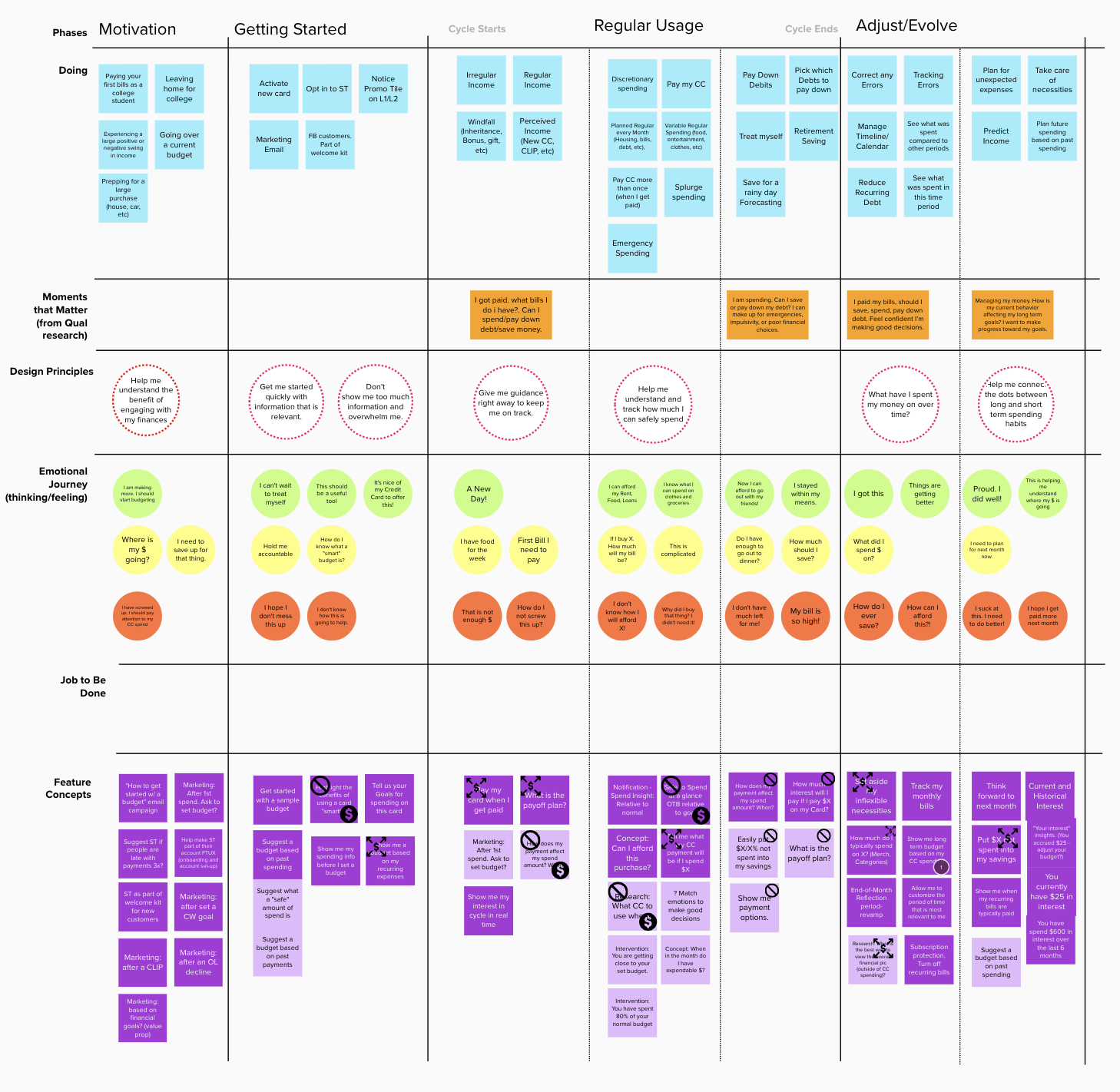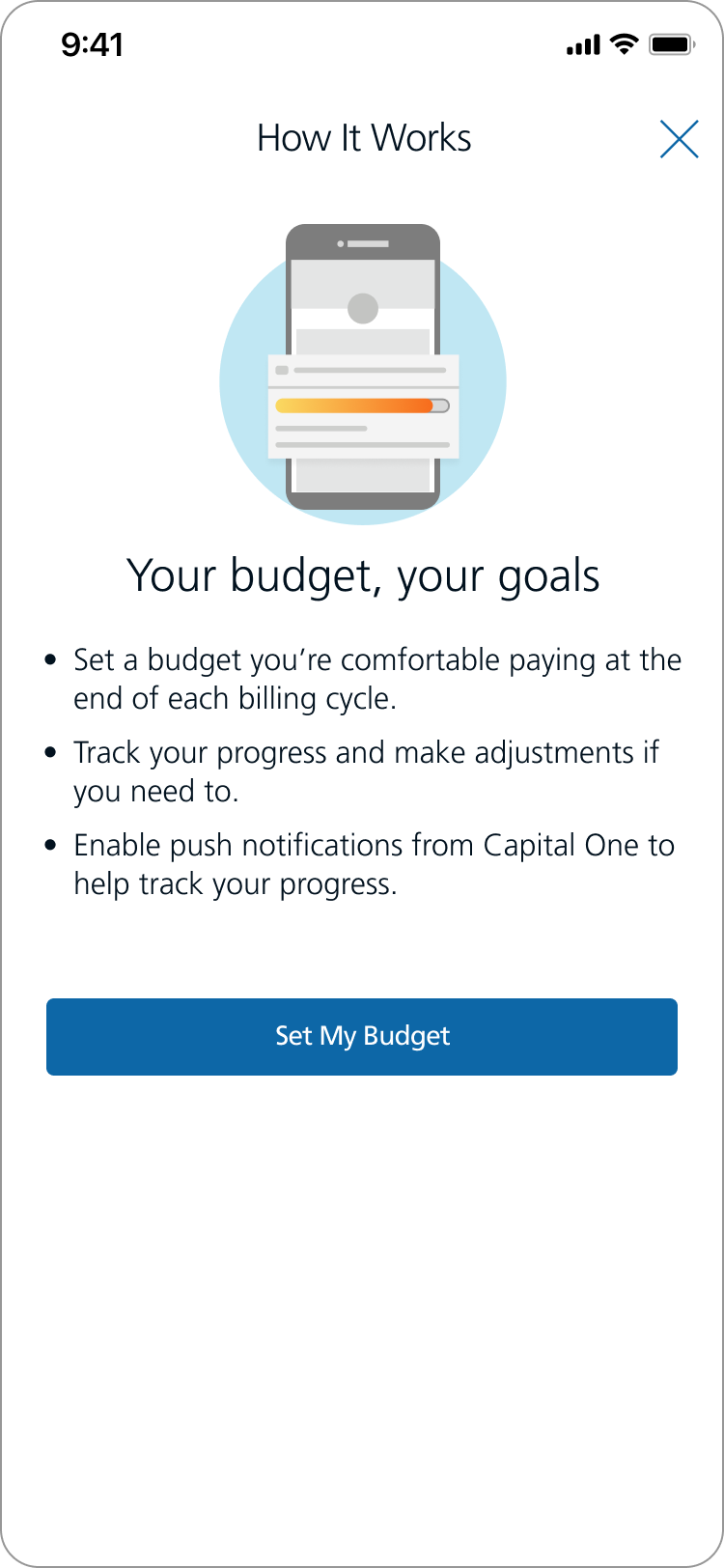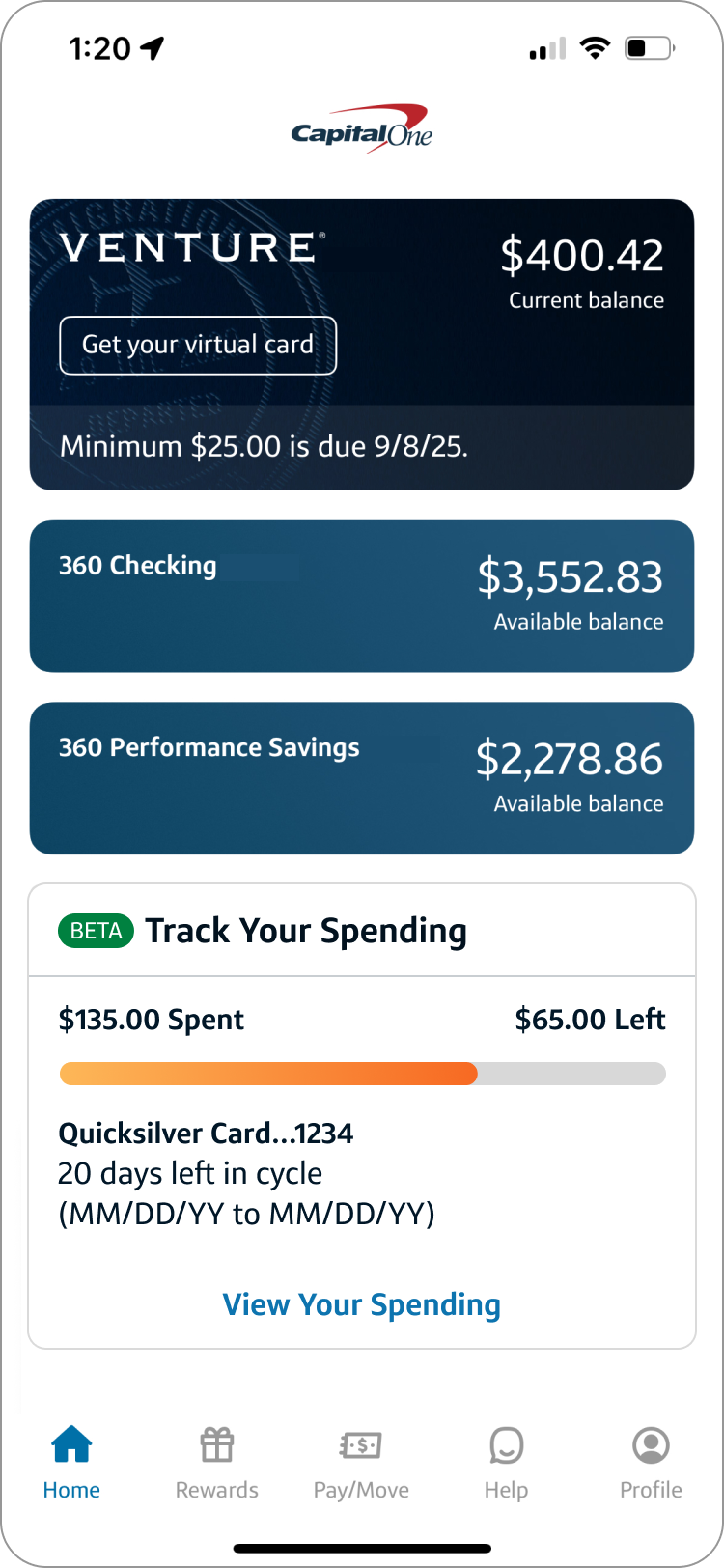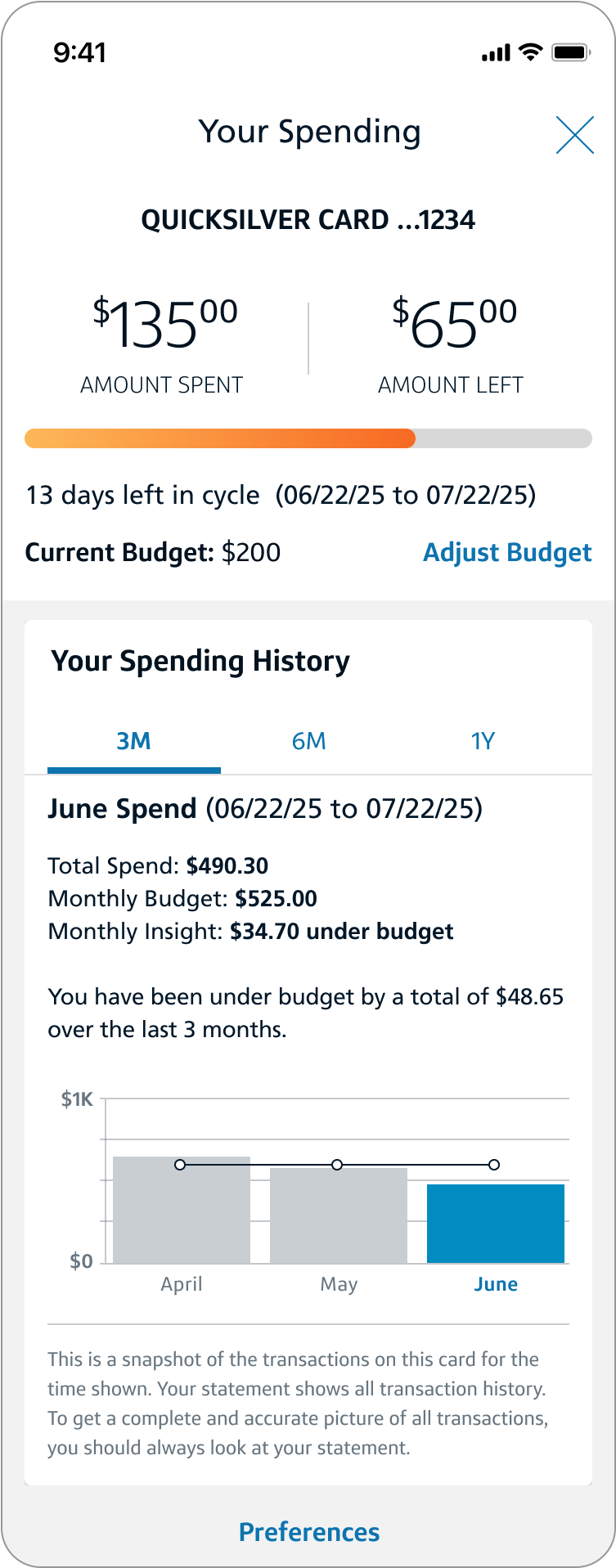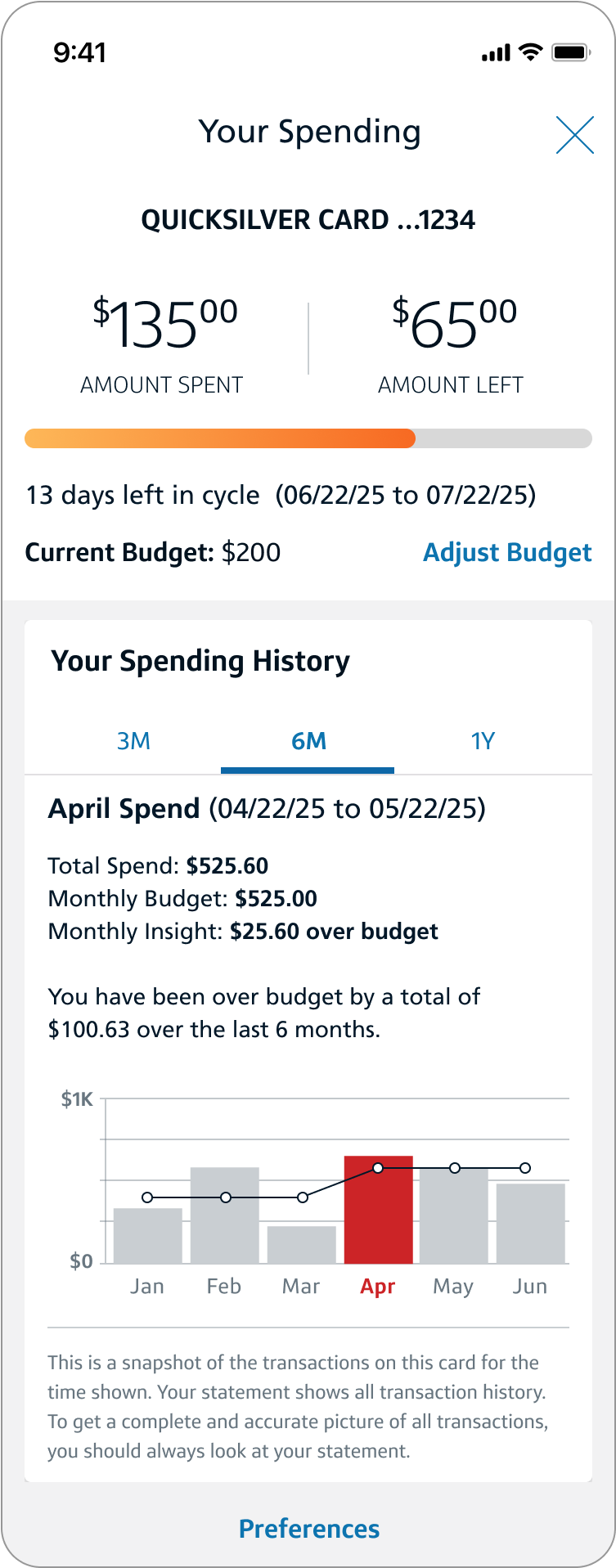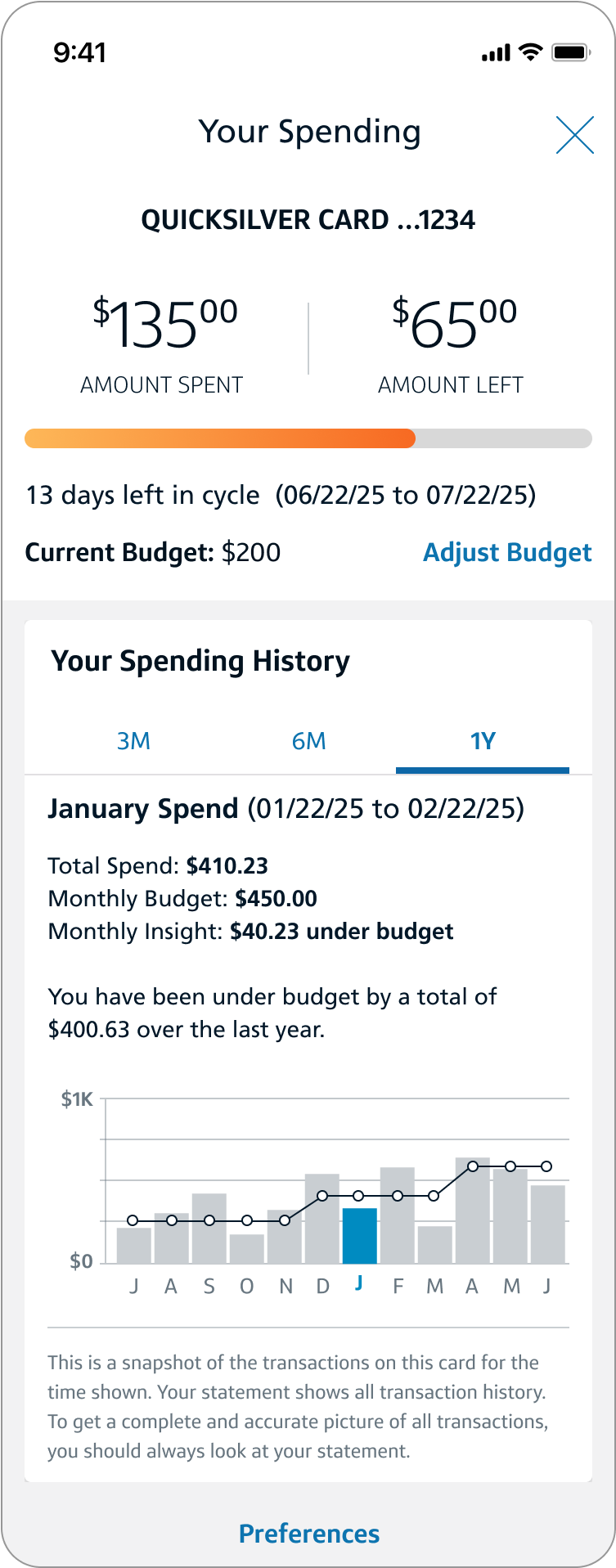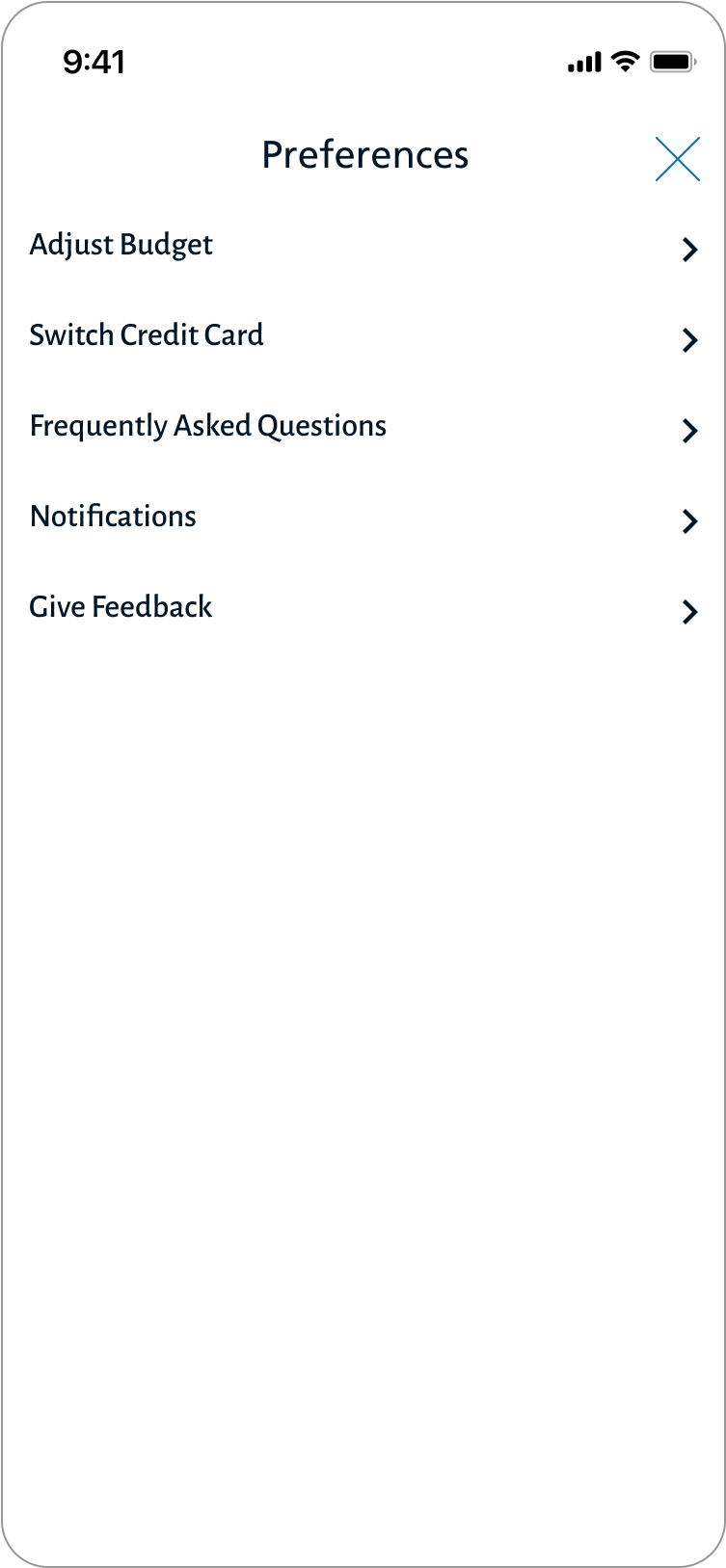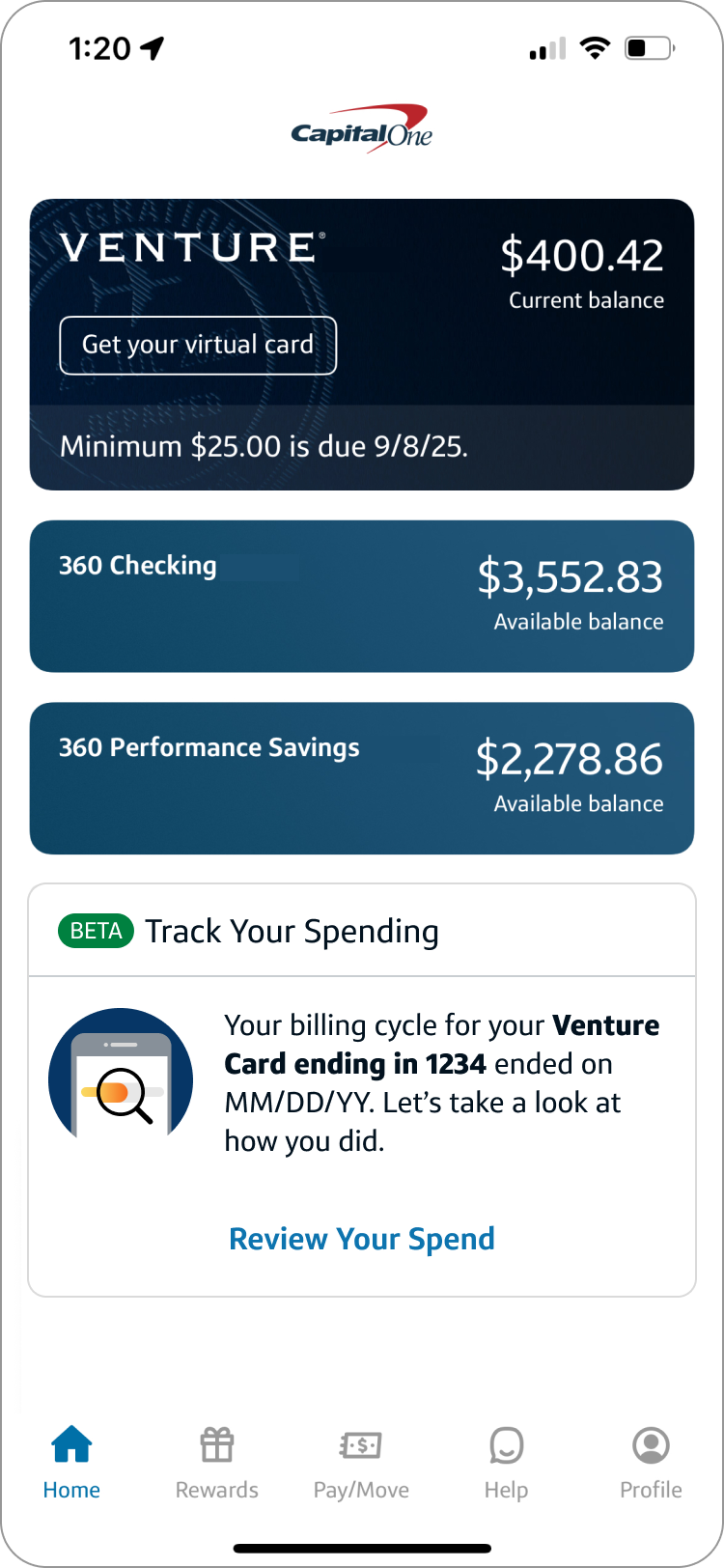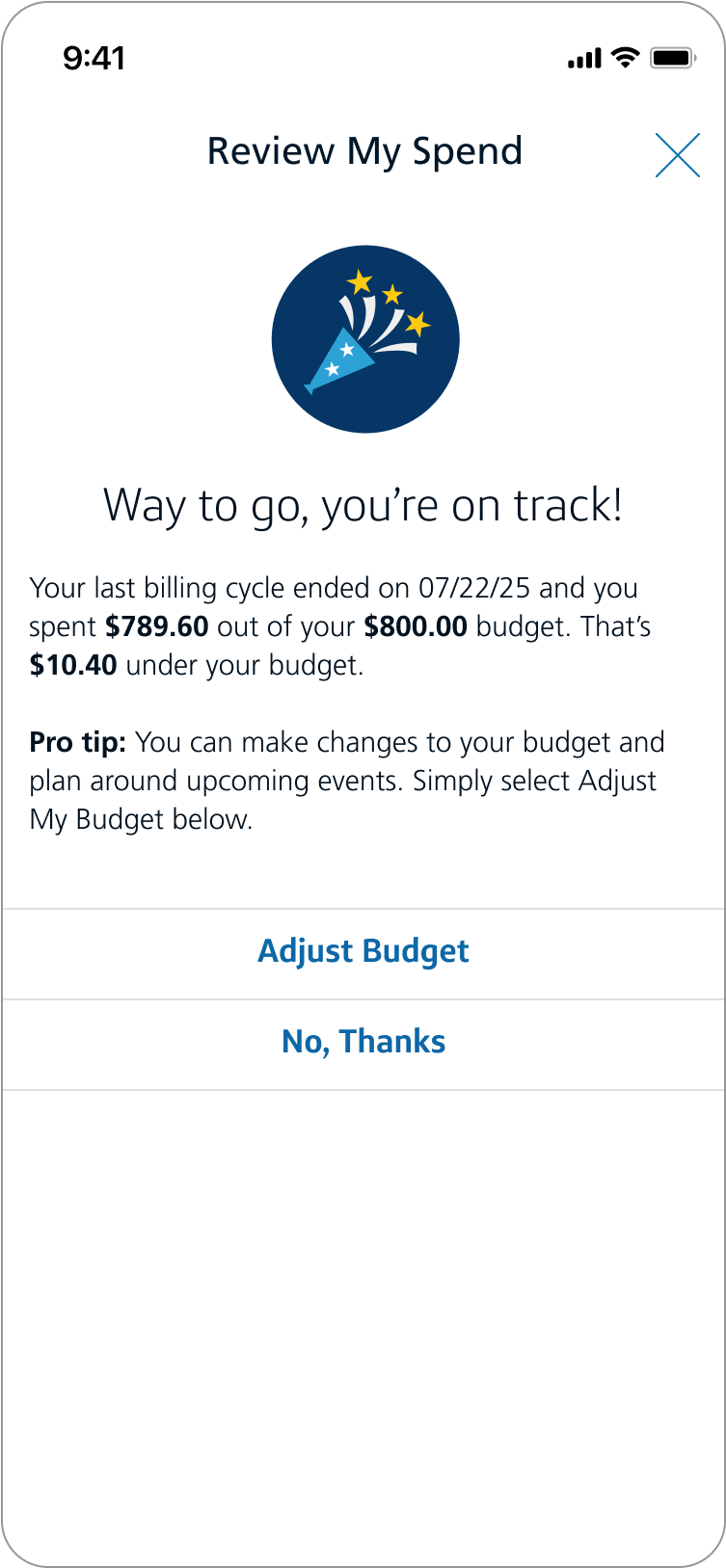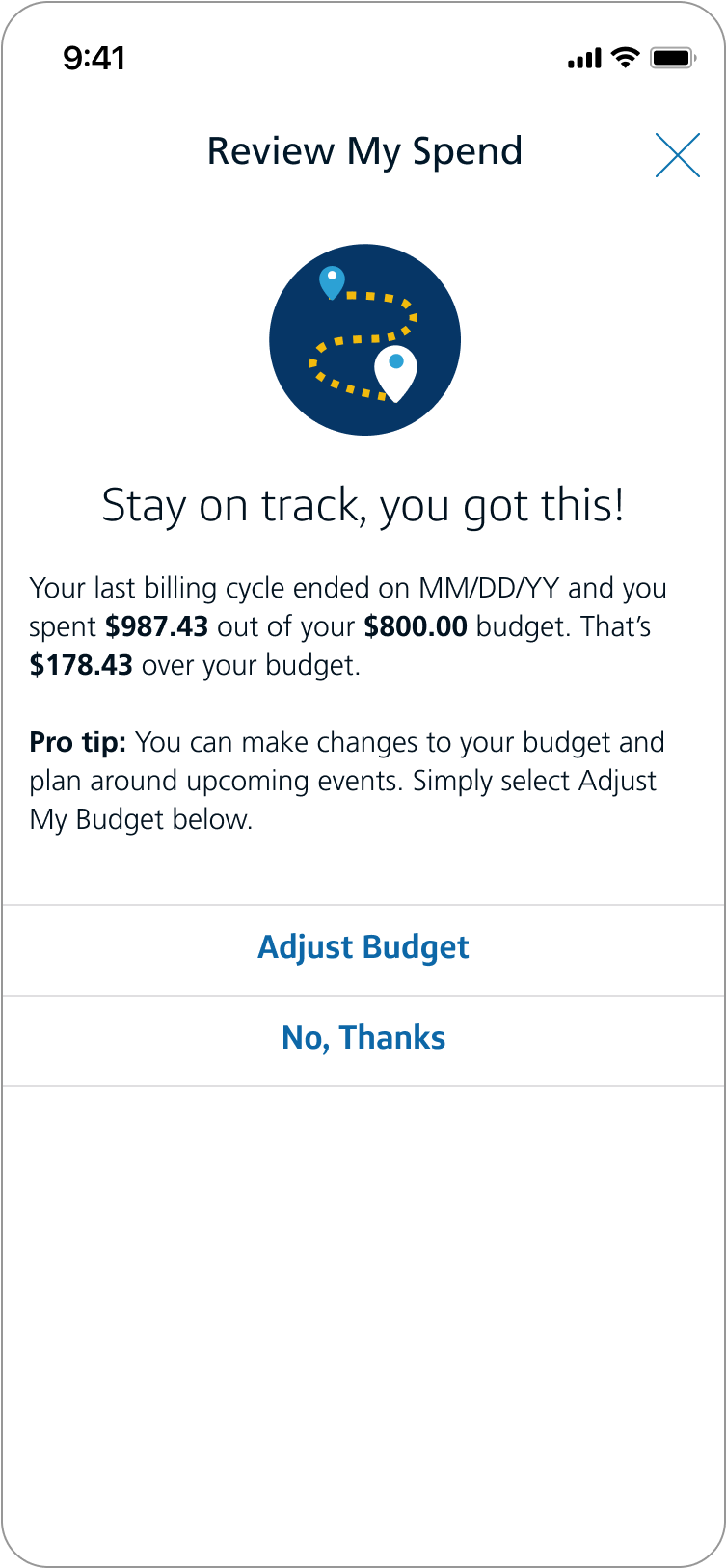CAPITAL ONE
Spend Tracker – A Financial Wellness Tool
Spend Tracker was a digital tool designed to help users understand their monthly spending, develop healthier financial habits, and ultimately reduce debt. Originally developed by Capital One Labs, the product needed a complete redesign to meet customer expectations and align with a broader company mission focused on financial well-being.
As the lead UX/UI designer, I collaborated closely with product and engineering to rethink, rebuild, and relaunch this experience from the ground up. We successfully launched the MVP to 10% of users and observed notable behavior changes in user engagement and financial activity.
Role: Lead UX/UI Designer
Platform: iOS & Android
Team: Product Manager, Product Owner, 3 Tech Teams (iOS, Android, Backend)
Key Skills: UX/UI Design, Research & User Testing, Product Strategy, Knowledge Mapping, Roadmap Development, and Production & Handoff
The Opportunity
Many Americans lack a clear picture of how they spend their money on a day-to-day basis. Whether thats due to a lack of motivation or lack of education, this disconnect often leads to overspending, debt accumulation, and poor financial decisions.
Spend Tracker set out to:
Create visibility into customers’ monthly spend
Provide actionable insights to encourage smarter financial decisions
Build habits that help users stay within budget and reduce debt
The original product had outdated architecture and an inconsistent user experience. A full redesign—both technically and visually—was required.
Customer Pain Points
Lack of awareness around spending patterns
Limited understanding of finances across credit cards
No clear budgeting or monthly reflection process
Tendency to overspend and fall into avoidable debt cycles
Business Context
The project supported a broader Capital One initiative to “Give every American confidence in their financial future and security in their financial present.” Spend Tracker was one of the first product experiments under a new business pillar focused on Financial Well-Being.
Success would not only improve customer ability to pay down debt and become more educated about their finances but position Capital One as a trusted partner in everyday financial tools.
Design Process
Discovery & Research
Mapped existing research and aligned on behavioral insights
Created a Customer Journey across five core phases:
Motivation – What triggers the desire to spend more mindfully?
Getting Started – How do customers decide on and set a budget?
Regular Usage – How do they track progress through the month?
Cycle Needs – What adjustments do they make mid-cycle?
Adjust & Evolve – How do they reflect and reset for the next month?
Knowledge Mapping & Ideation
Conducted brainstorming sessions with cross-functional partners
Identified opportunities for simplicity, habit-building, and behavioral nudges
Prioritized core features to focus on awareness, tracking, and reflection
User Testing
Developed and concept tested prototypes focused on:
A simpler onboarding experience (FTUX)
Historical spend and monthly summaries
Preferences for goal setting and notifications
Design Solution
The final MVP included three key flows:
FTUX (First-Time User Experience)
Reduced onboarding from three screens to one
Clarified benefits and consolidated setup context
Redesigned illustration to align with existing Capital One brand
Reduced the need for two interaction styles to a single button
Spend Details & Historical Views
Offered real-time insight into current spending habits
Designed a new feature to showcase a users monthly spend data over 3 months, 6 months and 1 year
Grouped all setting and preferences into a single location
Cycle Reflection
Enabled users to reflect, reset goals, and track progress
Reinforced budgeting as an iterative and learnable behavior
Impact
Beta MVP launched to 10% of customers with the potential to reach 19M+ users
FTUX completion rate increased by ~30%
Spend Tracker users showed strong financial behavior:
Earlier in their Capital One journey
Higher average spend and First-in-Wallet rates
Lower total debt
Reduced account attrition
Higher multi-card ownership
Key Takeaways
Customer behavior improved measurably among users who engaged with Spend Tracker, confirming that the product helped promote better financial habits.
Despite positive engagement, strategic shifts in business priorities led to the product being sunsetted after two years.
The experience delivered valuable insights and reusable design components that influenced future financial well-being products across the company.
Final Thoughts
Redesigning Spend Tracker was a unique opportunity to explore how financial tools can shift daily financial behavior. By grounding the design in user motivation, research insights, and business metrics—we delivered a tool that genuinely helped users gain more control over their monthly spending.
Even though the product was ultimately sunsetted—the learnings from this work continue to inform other initiatives today.


